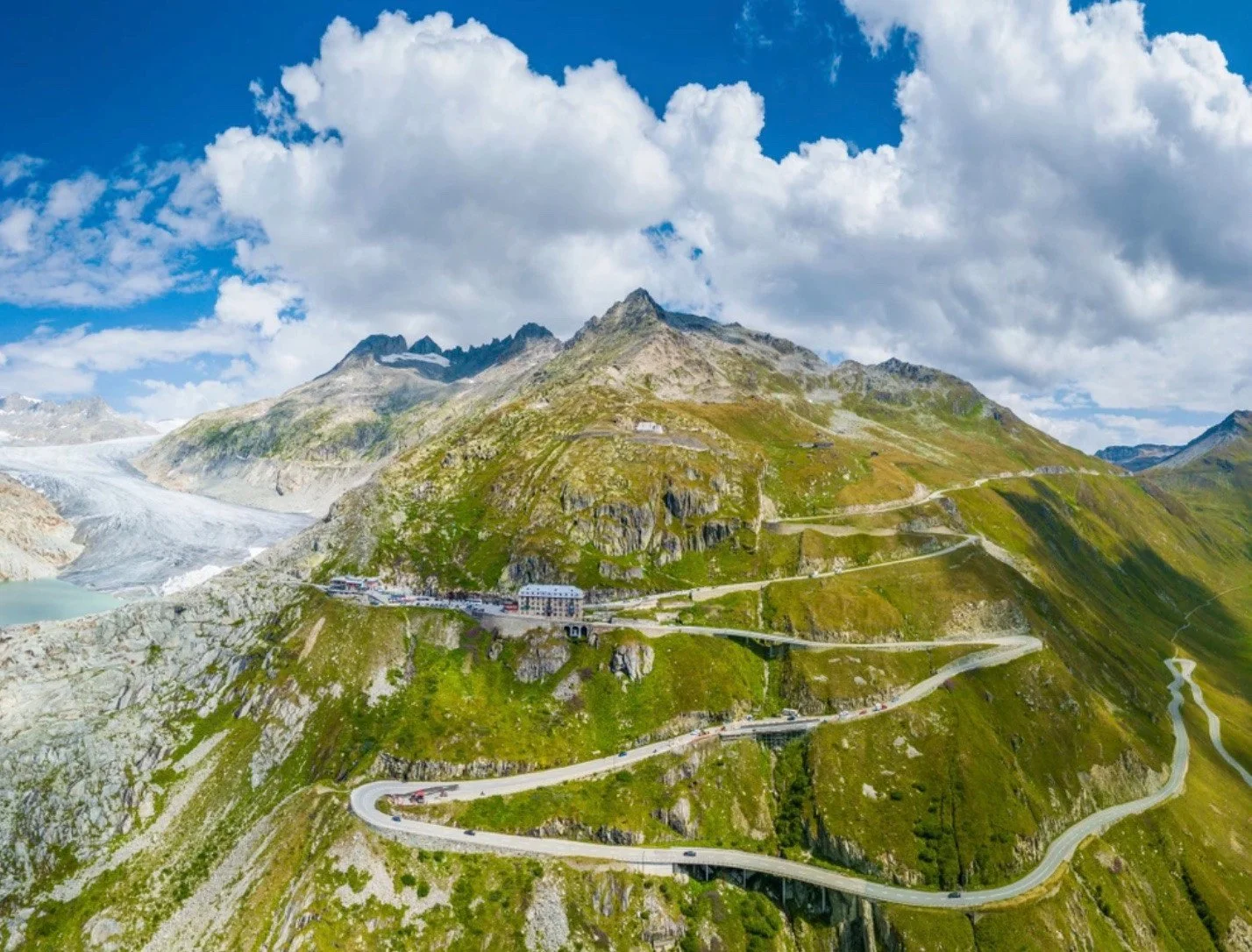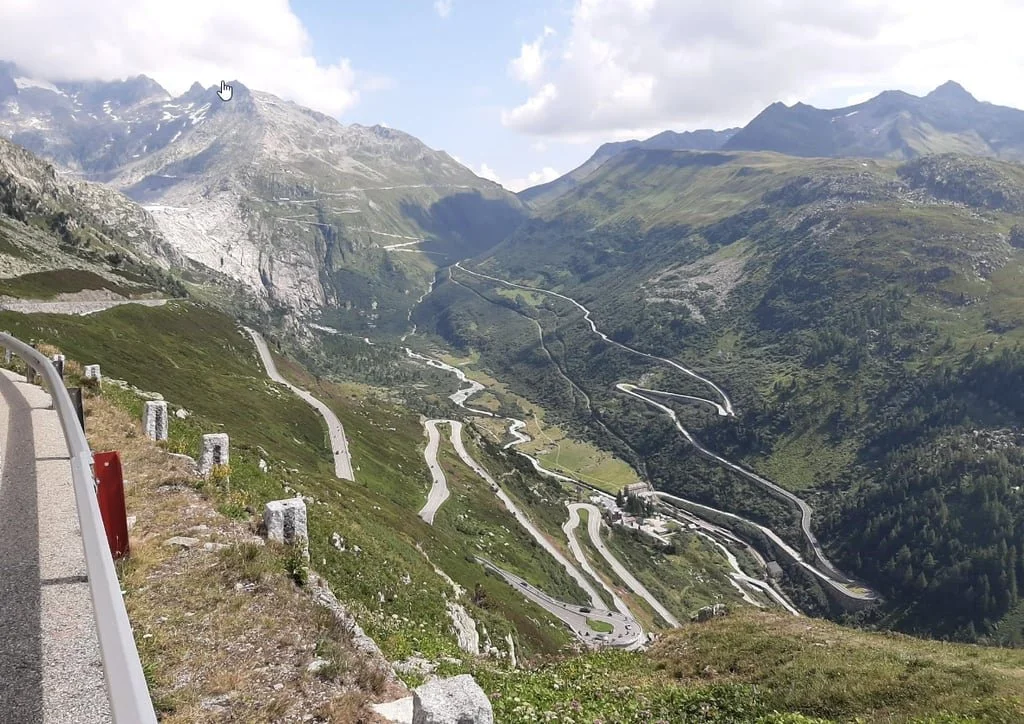Europe’s Ultimate Alpine Drives: 5 Passes Every Enthusiast Must Experience
For driving enthusiasts, nothing compares to the thrill of an alpine road. Towering peaks, sweeping bends, and endless panoramas make these mountain passes more than just routes — they’re journeys in themselves. Switzerland, in particular, is home to some of Europe’s most legendary drives. Here are five tried-and-tested alpine passes that deserve a place on every bucket list.
1. Susten Pass – The Scenic Showstopper
The Susten Pass is often hailed as one of Switzerland’s most beautiful roads and for good reason. Linking the cantons of Uri and Bern, the route climbs to 2,224 metres and offers sweeping views of glaciers, waterfalls, and lush valleys. The road is wide, smooth, and perfectly engineered for drivers who love rhythm and flow.
But what makes the Susten even more interesting is its history. Unlike some of the older passes, the Susten was built in the 1930s and officially opened in 1946, making it a relative newcomer in alpine terms. It was designed to improve east–west travel across the Bernese Alps and quickly became popular not just for transport but also for tourism. Its construction was partly driven by the Swiss government’s desire to provide jobs during difficult economic times, and the result is a road that feels tailor-made for enjoyment.
Today, the Susten is as much about the journey as the destination. Don’t miss the Stein Glacier viewpoint, where you’ll feel dwarfed by ice and rock. It’s a pass that combines technical driving with jaw-dropping scenery, making it one of the most rewarding drives in the Alps.
2. Furka Pass – Iconic and Unforgettable
The Furka Pass is where driving history meets cinematic legend. At 2,429 metres, it’s one of Switzerland’s highest paved roads and is instantly recognisable from the James Bond film Goldfinger. Beyond the fame, the Furka delivers tight switchbacks, fast sweepers, and unforgettable views of the Rhône Glacier.
Historically, the Furka was far more than a tourist route. Built in the 1860s, it provided a vital connection between the canton of Uri and Valais. For centuries, mule trains carried goods and salt over this rugged terrain, but the construction of the modern road transformed it into a major artery for commerce and travel. Its strategic position also meant it had military importance, especially during the World Wars, when Switzerland was keen to maintain alpine defences and secure mountain routes.
Driving the Furka is like stepping back into history. The mix of high-altitude exposure and dramatic landscapes makes this pass both thrilling and slightly intimidating. Drivers should take their time, not just for safety, but to truly absorb the rugged beauty that has made the Furka a bucket-list destination.
Furka Pass
3. Grimsel Pass – The Photographer’s Dream
Just south of the Furka, you’ll find the Grimsel Pass and together they make one of the greatest driving loops in Europe. The Grimsel is all about contrasts: granite cliffs, sparkling reservoirs, and winding hairpins that seem to defy gravity. At 2,165 metres, the road delivers both drama and elegance, with long stretches that allow for a smooth, flowing drive.
The history of the Grimsel stretches back to medieval times, when it served as a vital trade route connecting the Bernese Oberland with the Valais. Traders carried salt, wine, and cheese across its rugged landscape long before modern vehicles arrived. In the 20th century, the area saw significant hydroelectric development, and the reservoirs you pass today - Oberaar and Grimsel - are a direct result of that effort. They’ve become iconic landmarks, reflecting the engineering spirit of Switzerland as much as its natural beauty.
The reservoirs at the top are a striking highlight, their turquoise waters reflecting the peaks around them. For photographers, this pass is heaven - every corner offers a new composition. Pair it with the Furka and Susten, and you’ve got a trio of alpine roads that showcase Switzerland at its finest.
4. Nufenen Pass – The Quiet Giant
Less famous than its neighbours but no less impressive, the Nufenen Pass (2,478 metres) is Switzerland’s highest paved mountain pass that lies entirely within the country. Stretching between the cantons of Ticino and Valais, it’s a road of contrasts: peaceful meadows at the base, followed by a stark, windswept summit.
Nufenen is one of the more modern alpine roads, officially opened in 1969. Its construction was motivated by the need for a more direct link between Ticino and Valais, supporting both trade and regional mobility. Because of its late development, the Nufenen was built to higher standards than some older passes - wide, well-paved, and able to handle modern traffic.
What makes Nufenen so special today is its relative quietness. Compared to the busier Furka and Grimsel, it often feels like you have the road to yourself. It’s a longer, straighter pass, perfect for enjoying the scenery and letting the car stretch its legs. On clear days, the views of the Bernese Alps are simply breathtaking.
5. Klausen Pass – The Historic Classic
The Klausen Pass might not climb as high as some of the others (1,948 metres), but what it lacks in altitude it makes up for in heritage. This road has been the backdrop for legendary hill climbs and motor races since the early 20th century. Today, it’s still a thrilling drive, with endless curves winding through alpine pastures and rugged cliffs.
Historically, the Klausen was one of the earliest major mountain passes to be connected by a proper road, completed in 1899. Before that, it was a mule track used by traders moving between the cantons of Uri and Glarus. Its completion marked a milestone in Swiss road engineering, opening up the heart of the Alps to greater mobility. In the 1920s and 1930s, it became world-famous thanks to the Klausenrennen, a hill climb race that attracted some of the era’s greatest drivers. Even today, historic race events are occasionally re-enacted here, keeping the spirit alive.
The Klausen’s character is old-school Switzerland: narrow sections, traditional mountain villages, and hairpins that demand respect. It’s a reminder that driving isn’t just about speed, it’s about connection, history, and atmosphere.
Klausen Pass
Planning Your Adventure
The beauty of these passes lies in how easily they can be combined. The Furka, Grimsel, and Susten form an unforgettable driving triangle, while the Nufenen and Klausen add depth and variety to a longer road trip. The best time to tackle them is from late June to September, when the snow has cleared and the roads are fully open.
If you’re looking for the ultimate way to experience these roads, guided tours can remove the hassle of planning while ensuring you get the very best from each destination.
Drive Them With Ultimate Driving Adventures
At Ultimate Driving Adventures, we specialise in creating journeys that blend legendary roads, handpicked hotels, and unforgettable experiences. Our tours are designed for car enthusiasts who want more than just a holiday - they want an adventure. Whether it’s conquering Switzerland’s greatest passes or exploring hidden gems across Europe, we make sure every detail is taken care of so you can focus on the drive.
Our 2026 tours are now sold out, but register your interest for our 2027 tours today so you don’t miss out.






